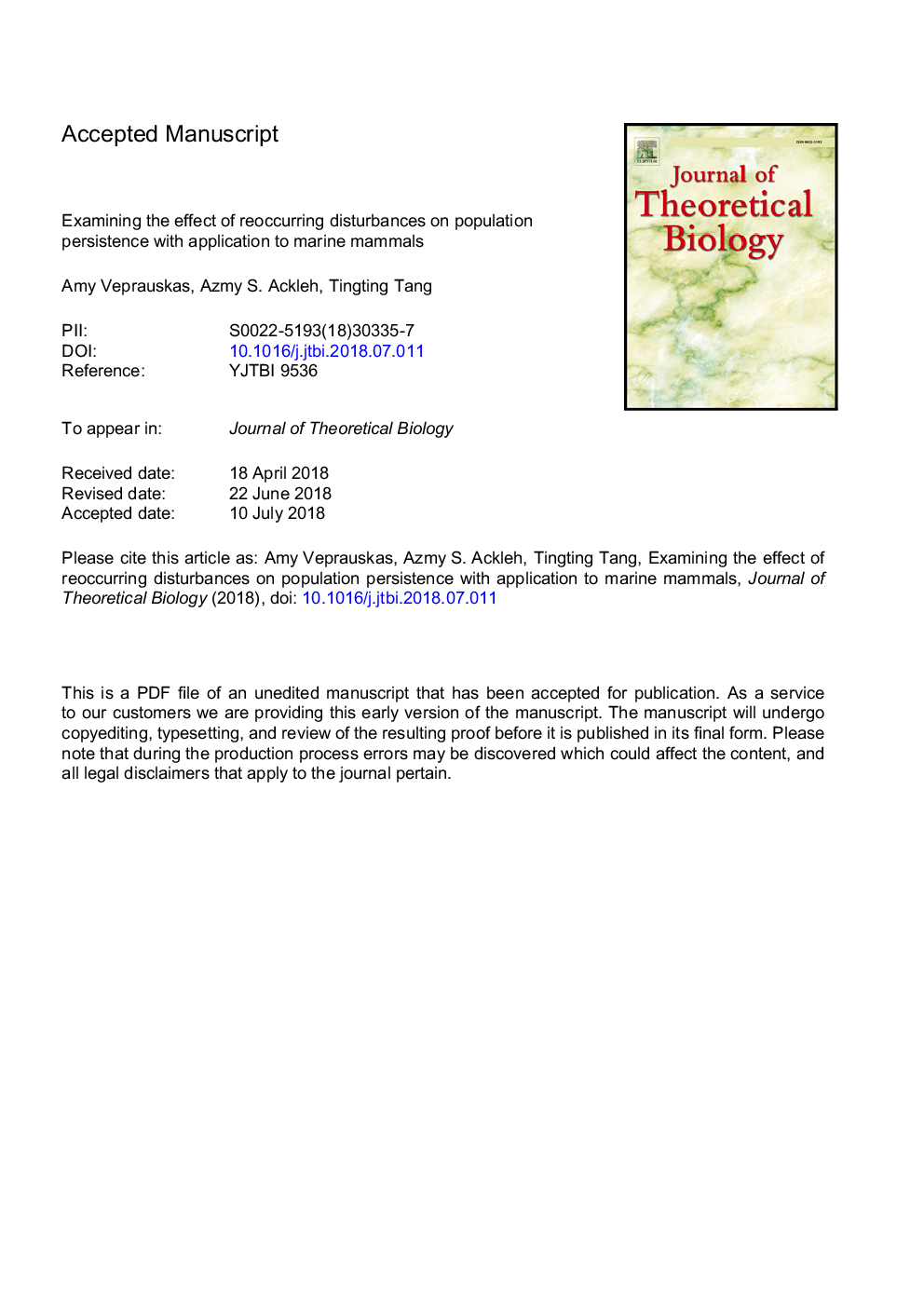| Article ID | Journal | Published Year | Pages | File Type |
|---|---|---|---|---|
| 8876487 | Journal of Theoretical Biology | 2018 | 25 Pages |
Abstract
We develop a two-state Markov chain to describe the effect of reoccurring disturbances on a population that is modeled by discrete-time matrix model. The environment is described by three parameters that define the magnitude of impact of a disturbance, the average duration of impact of a disturbance, and the average time between disturbances. We derive an approximation for the stochastic growth rate in order to examine how these three parameters affect population growth. From this approximation, we calculate the sensitivity and elasticity of the growth rate with respect to the environmental parameters. We show that the average duration of impact of a disturbance and the average time between disturbances contribute equally to the stochastic growth rate. We also show that the elasticity of the stochastic growth rate is more sensitive to changes in the magnitude of impact than to changes in either the average duration of impact of a disturbance or the average time between disturbances. These conclusions hold irrespective of the population under consideration. We then provide an application of the model formulation to examine how disturbances, such as oil spills, may affect a sperm whale population. The model results suggest that, in oder to mitigate the impact of disturbances, management strategies should focus on reducing the magnitude of impact. Meanwhile, if it is more feasible to reduce either the duration of impact or the time between impacts, managers should focus on whichever is easier to obtain. In addition, when applied to a sperm whale population, our model shows that the probability of extinction can dramatically increase when disturbance frequency increases but is not greatly impacted by the assumption that all disturbances have the same magnitude.
Keywords
Related Topics
Life Sciences
Agricultural and Biological Sciences
Agricultural and Biological Sciences (General)
Authors
Amy Veprauskas, Azmy S. Ackleh, Tingting Tang,
